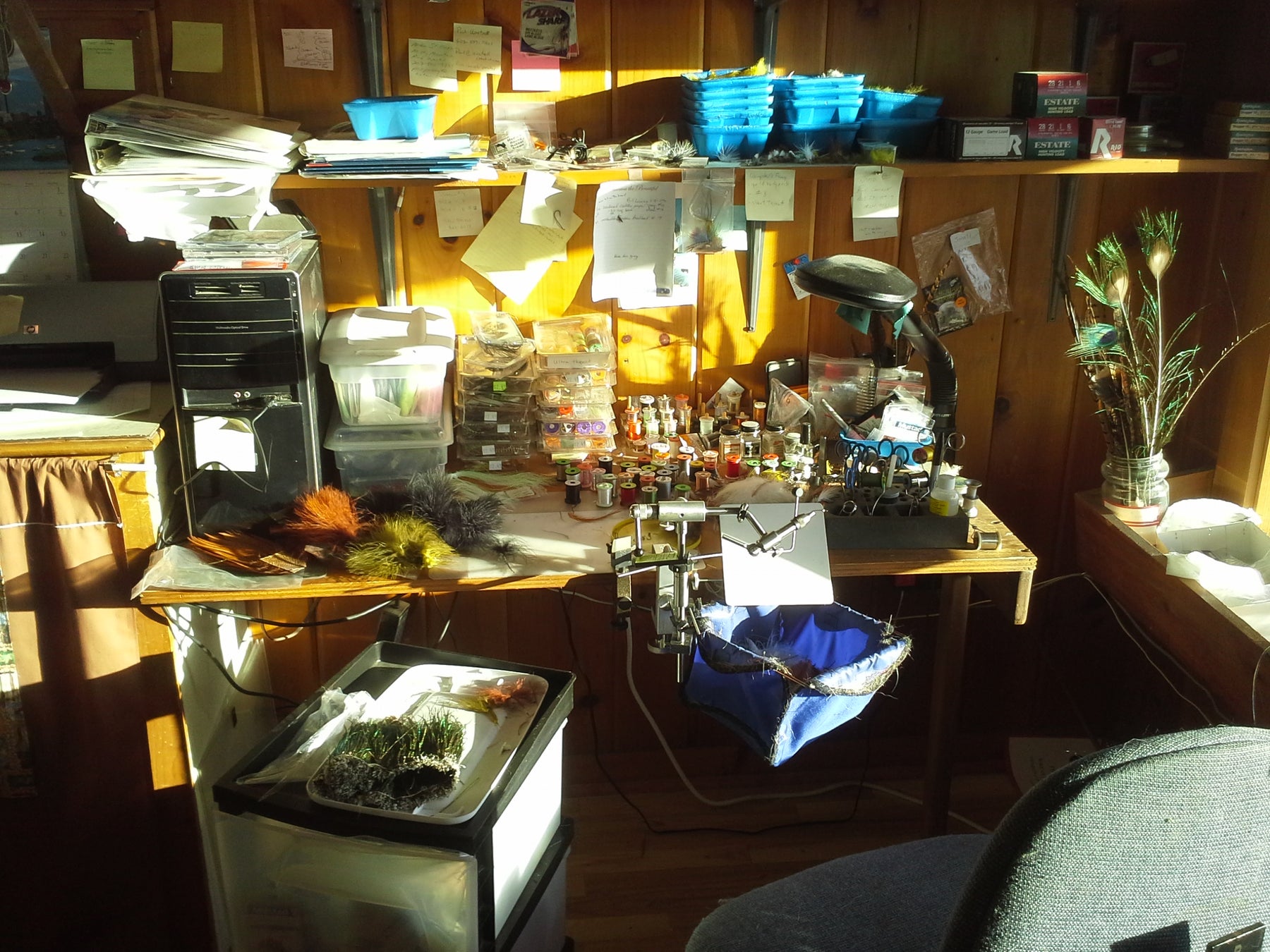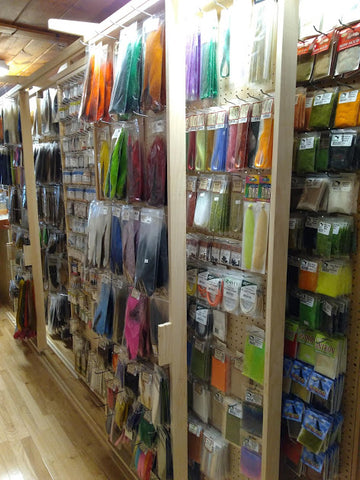Call Us 207-864-5615
rangeleyflyshop@gmail.com

Fly tying is a traditional art form first referenced in Western literature nearly 2,000 years ago. On this continent, Native Americans were creating fishing lures with such natural materials as feathers and animal hair long before the first European immigrants arrived. The fly-tying artist sometimes creates new designs, but most often creates these lures according to the “recipes” that have been tested and proven in local waters over decades. The Rangeley Region Sport Shop operates in this tradition, employing local people to hand tie flies used in recreational fishing.
More than 400 different American fly designs were catalogued by the combined efforts of Charles Orvis and his daughter Mary Orvis Marbury in the late 19th century, then by Outdoor Life editor Ray Bergman shortly before World War II. Maine fly fisher Carrie Stevens (1882-1970) of Upper Dam is known for her creation of the Grey Ghost, a “streamer” style fly created as an impression of the smelt bait fish. When she tested her initial design of a smelt-style streamer in Upper Dam Pool, she caught a 6-pound 13-ounce trout more than two feet long. Her catch took second place in Field & Stream magazine’s 1924 competition. Her flies were immediately in such demand that she went into business founding Rangeley Favorite Trout and Salmon Flies. From then on, you might say she was hooked.
Fly designs have changed over time as new technologies have enhanced the process of hand tying. In particular, the use of a small vise to hold the hook while tying and a specialized tool for “tying off” the fly has allowed the production of tiny flies that represent the early nymph and emerger stages of our local fishes’ insect prey. Materials, too, have changed - no longer just natural feathers and furs, but many synthetic materials are now used in tying flies. Visitors to the Rangeley Region Sports Shop can observe flies being hand tied in the traditional way, purchase traditional and contemporary materials for their own fly tying, and draw on the local expertise of the proprietors and staff as they explore area waters.

The Rangeley Region Sport Shop has been tying flies and selling fly tying materials since it was founded as Fletcher’s Fly Shop in 1945. Current owner-operators Brett and Sue Damm and their staff tie flies to the Fletcher “recipe” book (of which they own a copy), as well as more recently developed designs. The shop offers for sale one of the state’s most diverse collections of fly-tying materials, allowing creators to select the specific fly tying materials they want in person or to order these materials on line. As a materials supplier, they carry on the tradition of the shop’s founder, who was the primary supplier of feathers and hooks to Carrie Stevens.
{"one"=>"Select 2 or 3 items to compare", "other"=>"{{ count }} of 3 items selected"}
Leave a comment